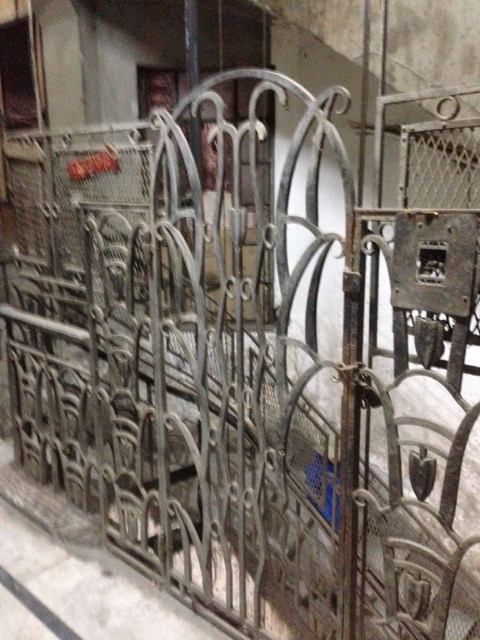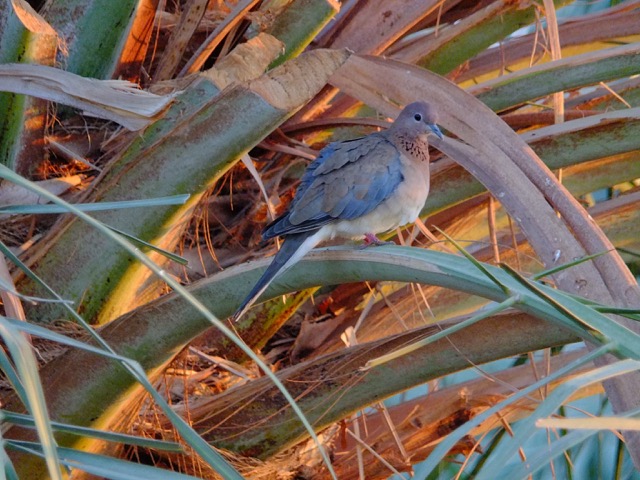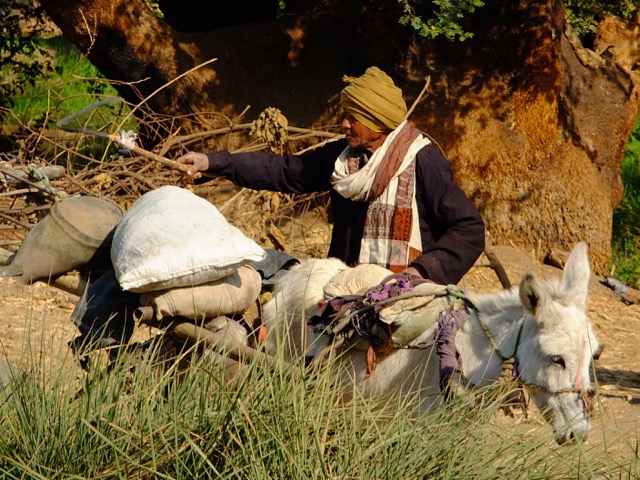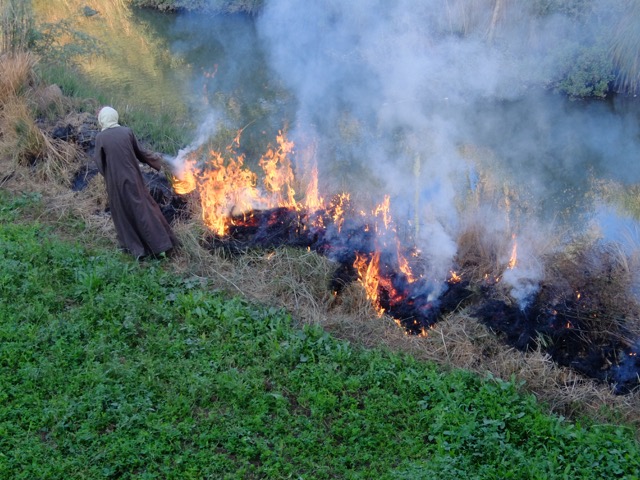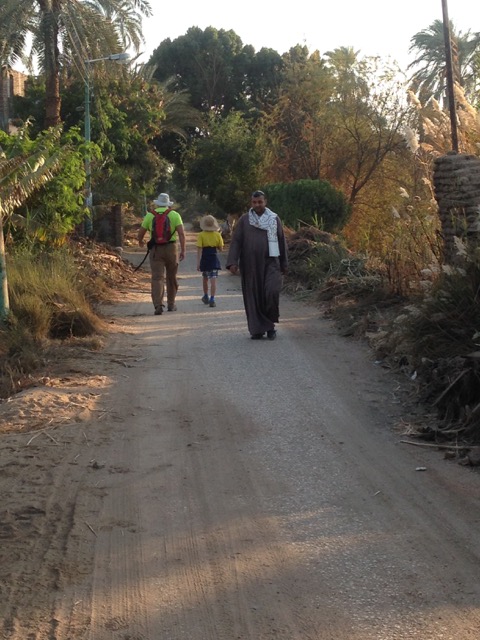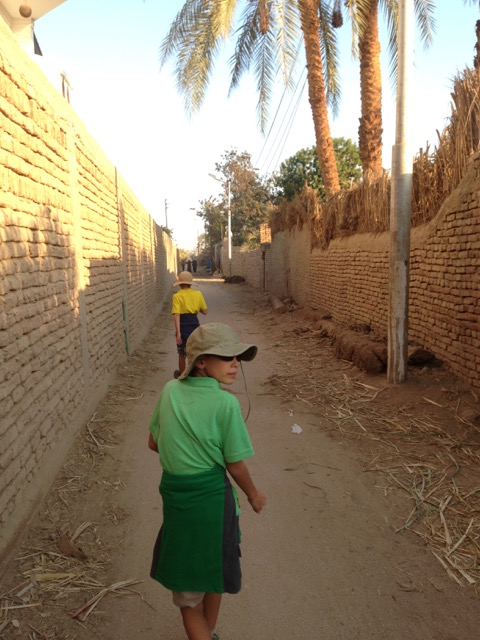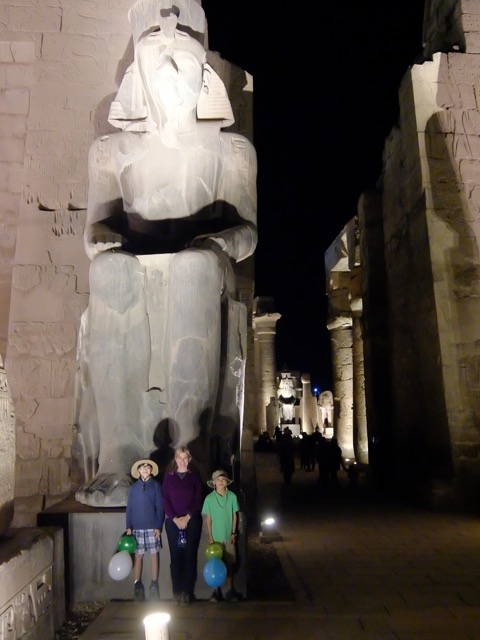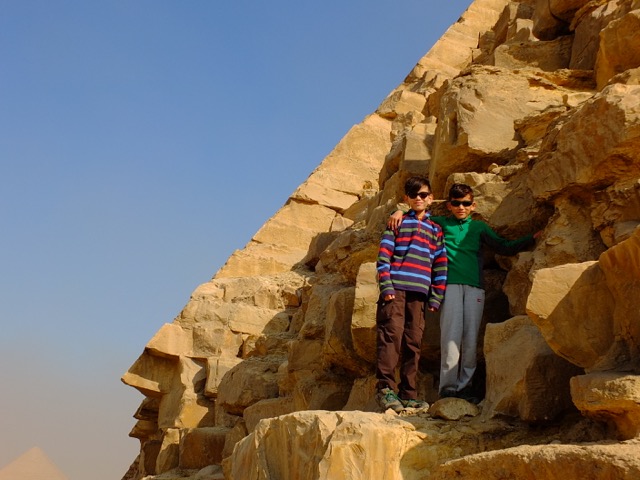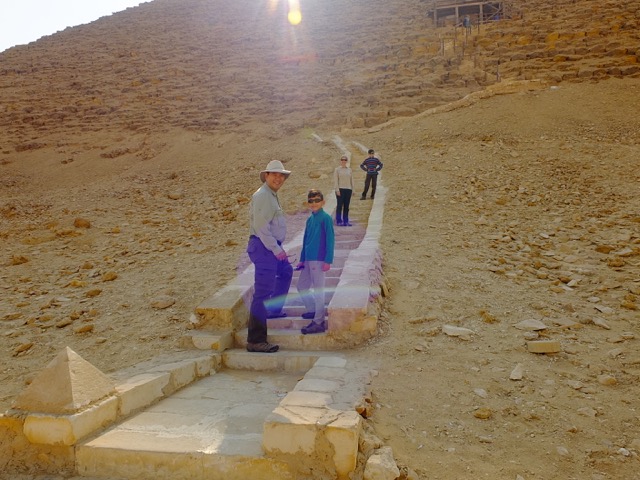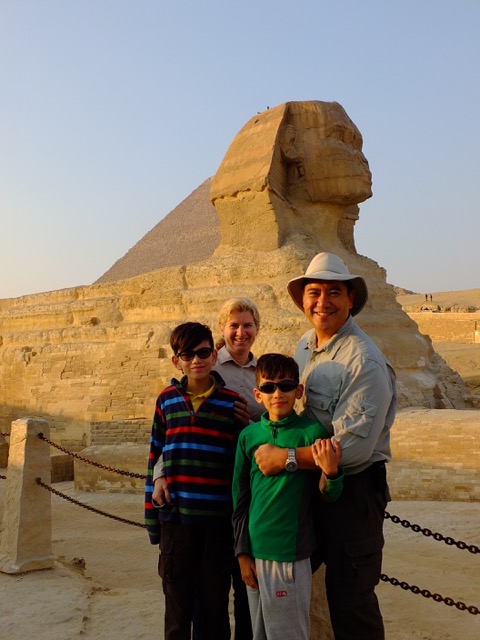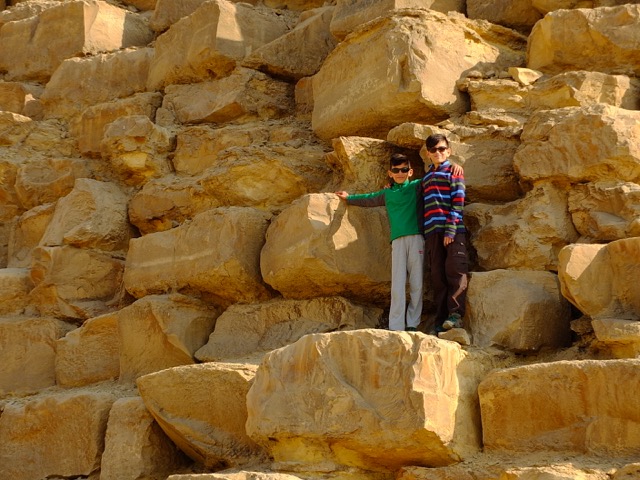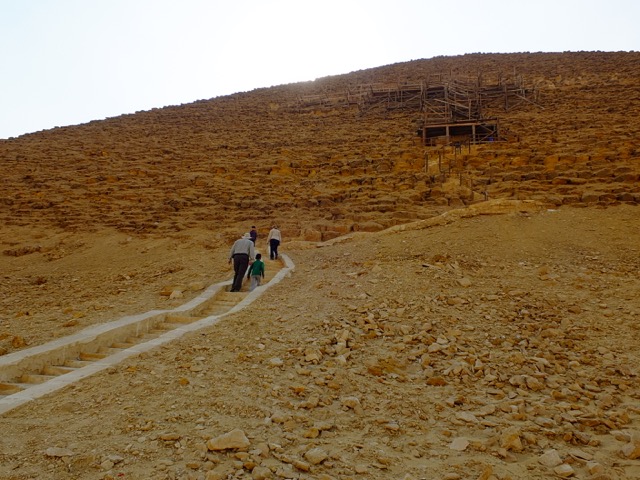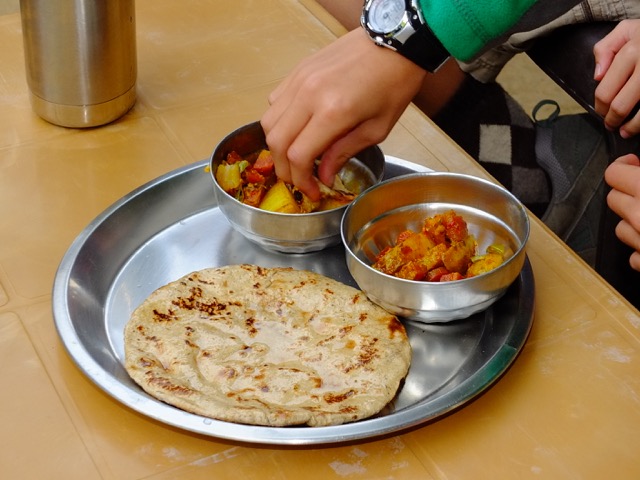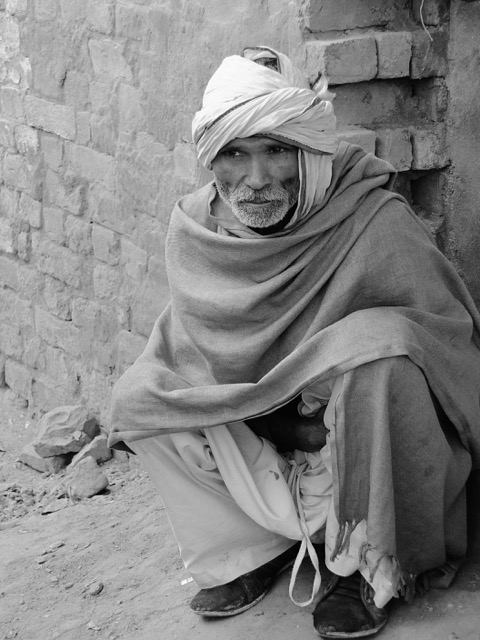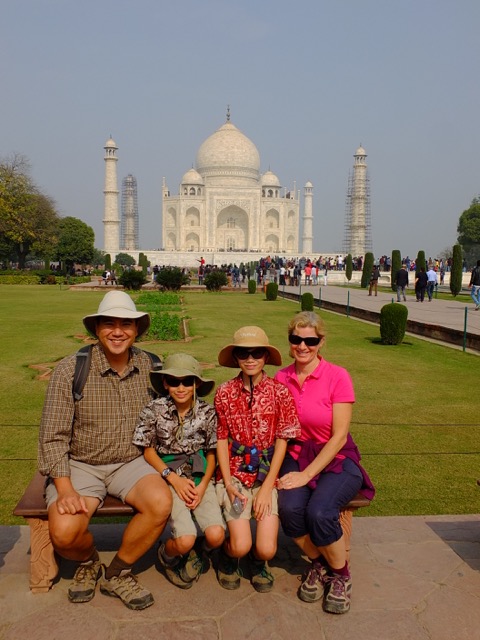We have reached the half-way-point in our travels. In some ways, when we reflect back on the places we’ve been and everything we’ve done, it seems like we’ve been on the road for a long time. In other ways, it feels like just yesterday that we left and it’s hard to believe we are half way through.
Here are some of our thoughts at this point in our journey….(Compare these to what we said before we left. It is in the “About Us” section of our blog.)
What are your goals for the remainder of the trip?
My goals (Barb) for the boys, of perspective, passion, perseverance, and purpose continue to be the same. However, I would say that at this point we have already come along way toward achieving these goals. Certainly the “perspective” has been a constant. Everywhere we go and many of the places we stay cause us to reflect on how other people live and give us an overwhelming sense of gratitude for the many things we take for granted when living in Canada. The boys have often commented on how fortunate we are to live where we do. It is obvious when we huddle around a small fire in someone’s home in Nepal that we are so fortunate to have well-built homes with good insulation. It is impossible to list the number of times we have reflected on how grateful we are.
Perseverance has also been something I’ve been very pleased with. The boys have had to walk through the heat for hours, often without quite enough food or water. They have walked up hill until their legs ache. They have had to endure 8 hour bus rides that make them sick to their stomachs. And they have done this without much complaint. No, it hasn’t always been fun but they have amazed me with their perseverance and resilience.
Passion and purpose: I absolutely loved how passionate Caleb got about the situation with the bombies in Laos. We stayed at the COPE centre for the entire morning, until we got too hungry to stay a moment longer! And then we came back later to learn more. Caleb has a thing about injustice and the whole situation in Laos was just not fair. Connor is not as vocal about his opinion on things but I know he is passionate about something when he turns to me (as he has several times) and says, “I have to write about this in my journal”! He was keen to carry his journal with him as we trekked through Nepal so he could detail his experience as it unfolded. He also took loads of notes during our “Reef Talk” session so that he would remember all the kinds of coral we would see. I wonder, when we return to Canada, which of these interests may turn into something bigger. There are so many doors that have opened and you just never know where they might lead.
Oh, and I’ve given up on the goal of losing a few pounds! As I write this we are in Luxor, Egypt and surviving on a lot of carbs: rice, bread, pasta, cereal. It’s hard to find good meat, fruits and vegetables so I don’t think I’ll be dropping down a size any time soon! On the other hand, I think I’ll need to start a good fitness regime when I get home. We’ve done a lot of walking but often it’s not at an overly rapid pace.
For the boys, their goals have now changed a little. Connor says he wants “to make it ‘til Europe so we can meet up with family”! Caleb says, “Based on the trek in Nepal, and now that I know my personal limits, I’d love to try Machu Picchu and do the Inca Trail. I’d also like to continue to learn more about how other people live and how other cultures differ from ours. What do they have and what do we have? Making those comparisons help us to appreciate what we have.”
Clay wants to continue to experience different cultures as we travel; trying not to be tourists but rather to live within the cultures we visit.
What are you most looking forward to for the remaining half of the trip?
Connor: I’m looking forward to Europe and I’m starting to look forward to heading home so I can ride my bike and run around outside.
Caleb: I’m looking forward to Kenya & Tanzania – experiencing another kind of culture and seeing the animals. I’m also looking forward to Europe where we will spend time with family.
Clay: I’m looking forward to meeting up with the Workman side of the family. When you travel you can become rather isolated and insular and it makes you appreciate the family connections that you otherwise might take for granted.
Barb: I’m looking forward to getting the final half of the trip planned! I feel like I enjoy the trip much more when I have the months ahead drafted out and I know where we will stay and how we will get there. Now that we are half way through the entire trip, I see a light at the end of the “trip planning” tunnel.
What are you worried about for the final half?
Clay: I still worry about political instability and government corruption.
Barb: I worry that I’ll miss something in all of the planning and we’ll end up stuck somewhere with nowhere to stay or a missing plane ticket! I also still worry about sickness. We’ve been incredibly fortunate with no major illnesses up until now and I really hope it continues that way.
Caleb: I worry that we might have a day where we can’t stand each other because we’ve spent so much time together! I’m not worried about sickness any more. I am worried about any upcoming road trips. I hate long curvy road trips! My fear of planes has improved. I’m now fine once we take off.
Connor: I still worry about getting mugged.
Our Top Experiences To Date
Clay:
- The slum tour in New Delhi. It was very eye opening.
- Meeting Haggai (a local farmer who lived down the road from us in Luxor) and having tea with him and his family in their home. It gives you insight into how a good percentage of the population live.
- Having our own set of wheels for 5 weeks was great.
Caleb:
- The Nepal trek. It was really challenging but I felt great accomplishing it. I was really pleased that our guide said he thought I could easily manage the Everest Base Camp trek.
- Beaches in Australia. Boogie boarding on the huge waves was amazing!
- COPE centre in Laos. I learned a lot.
Connor:
- The Great Barrier Reef. The reef was amazing because the coral was so close. You actually had to try hard not to touch it.
- Tobogganing down the Great Wall in China.
- The bike rides! (We biked in China and Thailand.)
Barb:
- The Nepal trek. I loved being outdoors and hiking through the incredible scenery. It was also wonderful to meet the local people as well as to meet other travelers who were on a similar journey.
- Camping in Australia. Again, spending so much time outside was amazing, as was having our own mode of transportation. Australia is a stunningly beautiful country. I could have spent a year there!
- Bali Green Camp. I was so impressed with the organization of the camp and with how much we learned in 3 days. It was also wonderful to spend time with other families who valued travel and the Green Camp experience.
What have been some of your ‘key learnings’ so far?
China – the history; some of the cultural norms; how to get around when you don’t speak the language; the huge variance in the landscape around China; the impact of a large population on a culture; the food;
Laos – the difficult situation the country is in due to the bombies; all about rice, from planting to eating; about Asian elephants; the role politics plays in the country and its history
Thailand – the tribal people; the amazing food; kinds of Thai massage; the role of the markets; religion (monks)
Indonesia – the hospitality of family; Luwak coffee; kinds of spices and herbs; Balinese homes; composting; food dyes; flora and fauna
Australia – Sydney opera house; the unique wildlife; the history; the Great Barrier Reef; all about Bananas; the varied geography & climate
Nepal – the lives of the mountain people; the impact of politics on the country (India cutting off the fuel supply),
India – some of the cultural norms; life in the slums; the role of the backwaters; how to track tigers & wildlife; growing tea in the plantations; the role of politics; the history (Taj Mahal & Agra Fort), food (always spicy!); how to say, “please don’t add the chilis” – Caleb learned this for us!
Egypt – the history; a little about the culture; how farmers live;
Overall:
- we have learned key phrases to get around in the different languages;
- how to deal with the touts and beggars
- that you can trust people a lot of the time and there are some incredibly kind people out there
- we’ve learned the key pieces that need to be arranged before moving to a new place – phone cards, food, money, map, accommodation, and transportation
- that the four of us get along pretty well most of the time!
- that we can be very flexible and adaptable!
- we don’t need much!
I think this last one is HUGE. We have been traveling for 6 months with 2 duffels (one is about 20 kg, one is 15). Aside from having to buy a new pencil and eraser, and a longer rope for a clothes line, we have really lacked for nothing. It has been very freeing to carry all of our essentials with us and not to worry about rooms full of other “stuff”. I think I spend way to long, when I’m back home, managing our “stuff” and I’d like to lessen the hold it has on my life when we return. Say no to the stuff!
What do you miss the most?
Caleb: I miss home, especially the piano, friends & family, and having my own personal space
Connor: I miss school, riding my bike, my friends, and Joy Bible Camp
Clay: I miss playing guitar at church; friends & family (covenant group); and my regular chiropractic adjustments!
Barb: I miss chatting with friends, family and colleagues; and my own personal space
What do you think you will appreciate the most when you return?
Clay: I think after this trip when I come up against obstacles/problems I will recognize that often they are first world problems and often not worth the stress and anxiety that we give them . There are so many people who do with so much less.
Caleb: I will appreciate my piano and having some alone time
Barb: I will appreciate hot water, a nice shower, our car, and toilet paper!
Connor: I will appreciate our house, my bike, and having good wifi
How do you think your life would be different if you had grown up in another country?
Caleb: we’d have to be very careful with the money we spent; we wouldn’t have any allowance; the lives we have now would look like luxury to us
Connor: we’d speak a different language and have different customs
If you were to do the first half of your trip again what would you do differently? .
Caleb: I think I would skip China and spend more time in the other places.
Connor: I’d go down the toboggan at the Great Wall again!
Clay: I would bring a lot more back pain medication! I’d visit China when it wasn’t so hot.
Barb: I would rent a trailer and a car in Australia instead of a camper van. I’d bring more US cash. I’d cut down on the road trips in Kerala, India. While I did try to plan as much of thrip as I could ahead of time, I would try to plan even more to save having to do quite so much on the road.
Scariest Moments:
Caleb- I thought I had lost everyone in the crowds at the Terracotta Warriors. Even though it was only for a few minutes, I was terrified! Also, the Pandora experience in Jakarta, Indonesia was rather scary. Maybe if the dead bodies hadn’t moved I’d have been OK!
Connor – When I was sitting in the airplane and I saw big bolts of lightning flash outside the window.
Clay – Wandering around the hutong in Beijing with no idea of where our house was, was rather scary. We had no map and no phone card at that point. We learned from that experience. Also, reading that a shark had attacked a surfer on the same beach we had been at the day before in Australia was rather nerve wracking.
Barb – I didn’t like being in Cairo, and hearing on the news about people being shot down the street from where we were staying. But I think I was even more terrified trying to drive a scooter in Pai!
Best Laugh Out Loud Moments:
- Playing charades on the train out to Blue Mountain in Australia
- Daddy’s story about the possum coming to visit him in the camper van in Australia
- Visiting Dizzee World in India – with hardly anyone else around and discovering many of the rides in rather ill repair
- Watching Clay trying to eat his “non-spicy” meal in Thailand (which was still oh, so spicy!)
Most Challenging Moments:
For Clay: Climbing the 3,500 steps to Poon Hill in Nepal
All of us: trying to communicate in China
Caleb, Connor, Barb: the road trips in Kerala and the road trip to Pai
Coping with the Heat in China, Laos, and Thailand
Best Accommodation So Far:
Our Villa in Hua Hin, Thailand
Worst Accommodation So Far:
Our little apartment, in the hutong in China and the mud hut in Laos
Second half, here we come!!! Can’t wait to see what surprises lay in store for us in the next half of the journey!


















